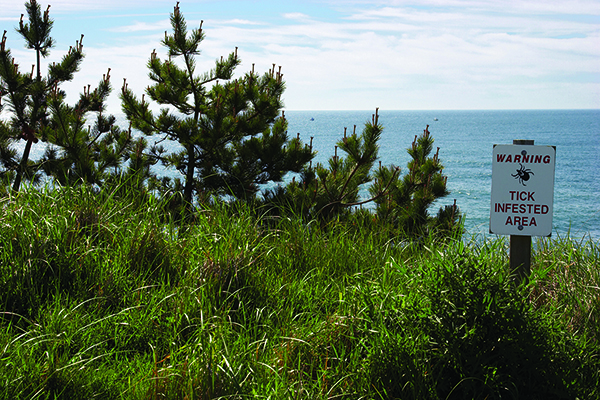The number of confirmed cases of Lyme disease has reached epidemic proportions in the past decade. Fortunately, the disease is easy to treat with antibiotics when caught early, and there are steps you can take to prevent exposure to tick bites when hiking or spending time outdoors.
From the Woods to Your Backyard
Tick season typically starts in spring (as early as March) and lasts until the first freeze in many areas. Ticks commonly thrive in tall grass and heavily wooded areas, especially where leaf debris covers the ground. Although ticks love the deep woods, it’s possible to find them in your backyard or nearby parks, particularly in places surrounded by woods.
A bite from an infected deer tick or western blacklegged tick can cause someone to develop Lyme disease, a bacterial infection that may start with a bull’s-eye skin rash. If left untreated for months or years, Lyme disease can lead to severe joint pain, chronic neurological symptoms and other problems.
Detection and Treatment
Not all ticks carry Lyme disease. However, it is possible for adult and immature forms of deer ticks (nymphs) to transmit the disease. The risk of getting the disease is low if the tick is removed promptly. The bacteria gets into your bloodstream only if the tick stays attached to the skin for 24 to 48 hours or longer.
Some deer ticks are so small they may go unnoticed. That’s why it’s important to watch for acute signs of Lyme disease, including:
- Bull’s-eye rash
- Flu-like symptoms such as fever, chills and body aches
- Headache and fatigue
- Swollen lymph nodes
Some people don’t get a telltale rash, so it’s important to see your doctor if you’re feeling sick or believe you have been bitten. A simple course of antibiotics is all it takes to treat Lyme disease in the early stages.
Six Ways to Stop Ticks in Their Tracks
If you live in an area with a high tick population – or plan to travel where ticks may be abundant – you can decrease your risk of getting Lyme disease with some simple precautions:
- Wear long pants tucked into your socks, a long-sleeve shirt and a hat. Light-colored clothing is best.
- Apply an insect repellent with at least 20 percent DEET to your skin and clothing. Permethrin can also be applied on clothing to repel ticks. Oil of lemon eucalyptus, a more natural product, also offers protection. Always read product directions before applying on children.
- Stay on the trails. Avoid walking through thick woods and long grass.
- Keep your dog on a leash. Check pets for ticks when they come indoors.
- Check for ticks after being outdoors. Ticks can be very small (about the size of a poppy seed) so it’s important to search carefully. Showering after being outdoors can help, because unattached ticks may wash off with a washcloth.
- If you find a tick, remove it with tweezers. Gently grasp the tick near its head or mouth and pull steadily. Dispose of the tick and use antiseptic on the bite area.
* Source: Centers for Disease Control and Prevention, www.cdc.gov
To find a doctor or schedule an appointment, visit Steward DoctorFinder™ or call 1-800-488-5959.




